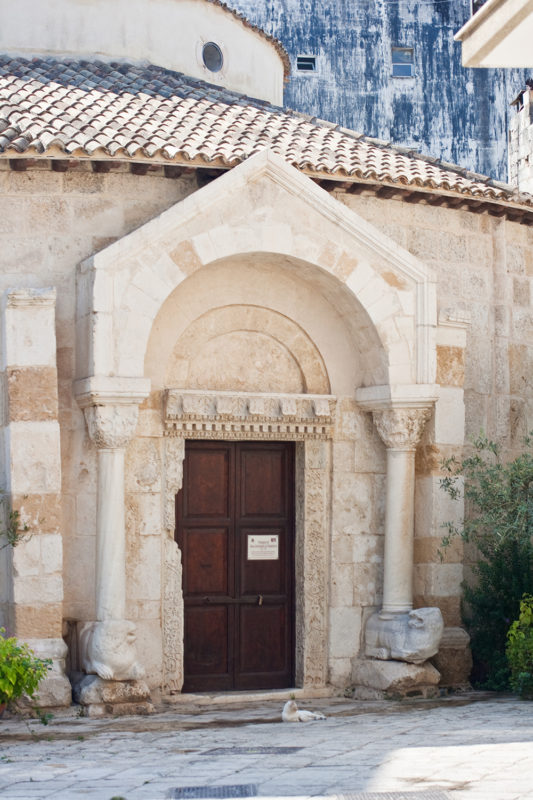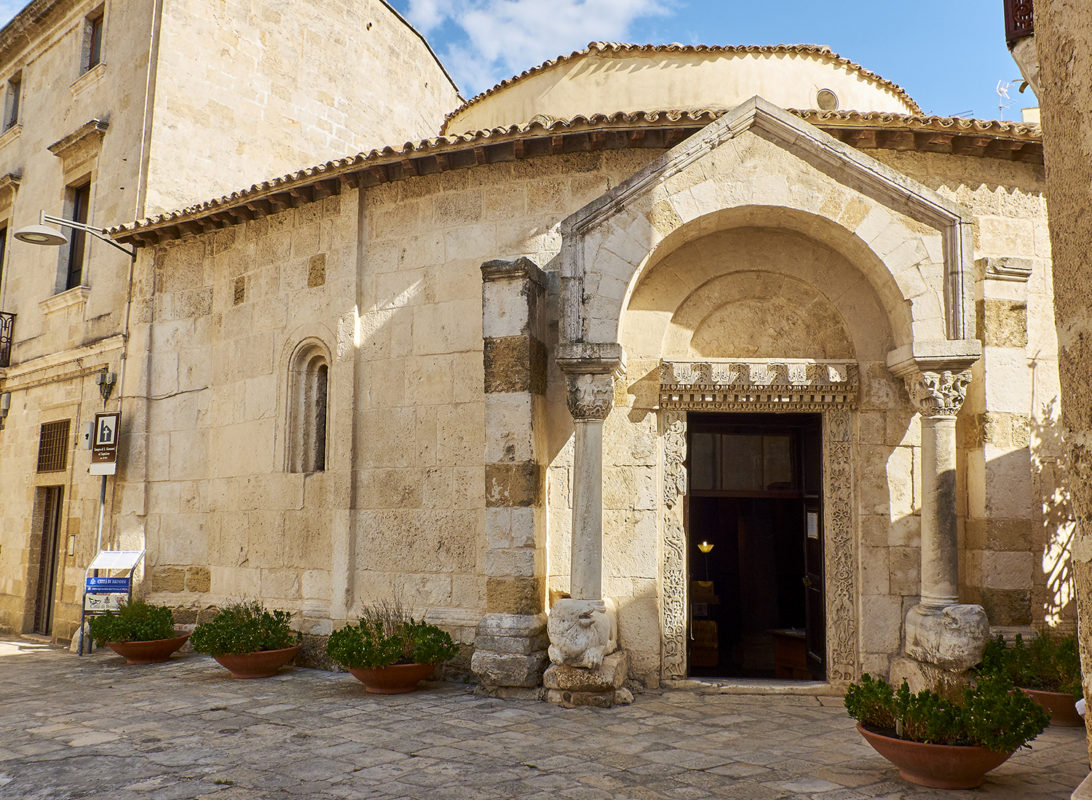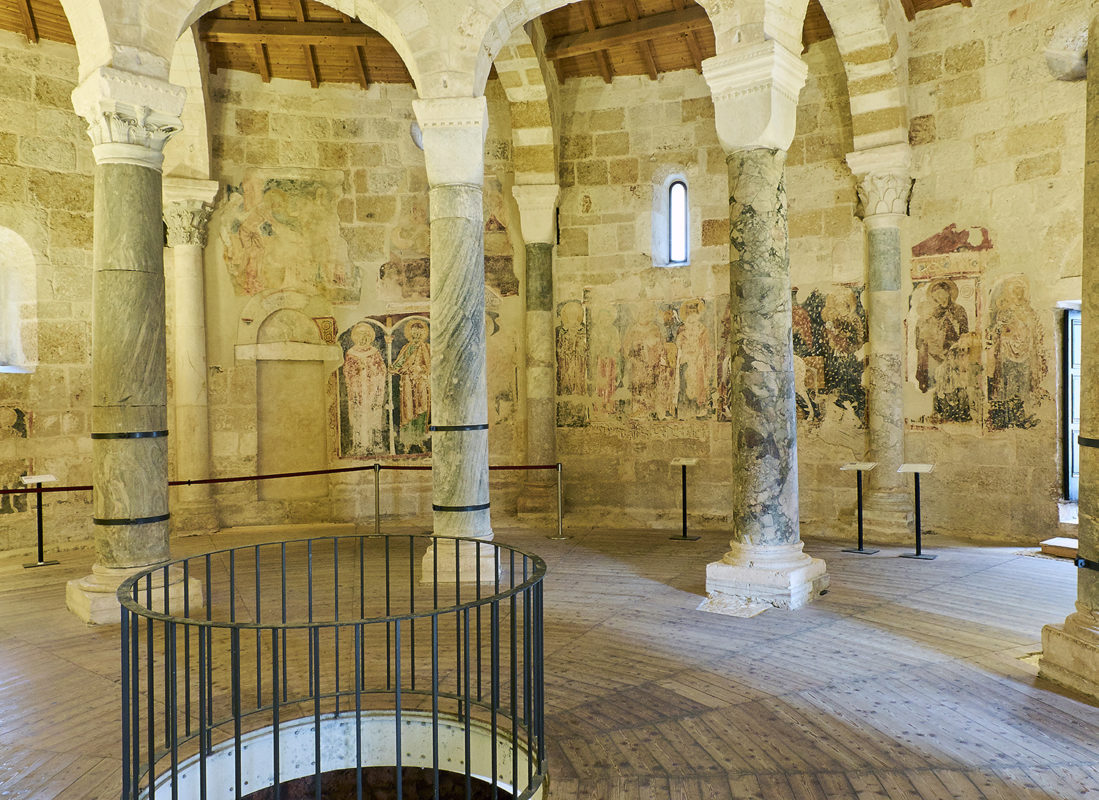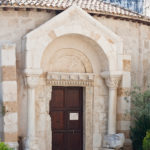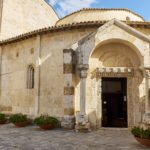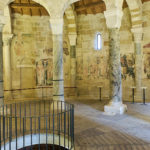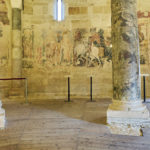St. John at the Sepulchre
The church of the Holy Sepulchre was built around the end of the 11th century, at the behest of the Norman prince Bohemond who wanted to give thanks for the lucky success of the Crusade he himself had taken part in.The church of the Holy Sepulchre was built around the end of the 11th century, at the behest of the Norman prince Bohemond who wanted to give thanks for the lucky success of the Crusade he himself had taken part in. The building has a circular plan which replicates the Anastasis Rotunda of the Holy Sepulchre in Jerusalem, proposing itself as a memory for those who came from the Holy Land and as an anticipation for those who were heading there.
Through the northern portal, opened to offer direct access to those who walked along the central axis of medieval Brindisi, that is the present Via Tarantini-Santabarbara, today it is possible to enter a lush orchard-garden of about 500 square metres. The inside is supported by eight columns with precious capitals. On the internal walls, it is possible to admire frescos with images of the life of Christ and saints dating back to the 13th-15th century.
The church of the Holy Sepulchre was built around the end of the 11th century, at the behest of the Norman prince Bohemond who wanted to give thanks for the lucky success of the Crusade he himself had taken part in. The building has a circular plan which replicates the Anastasis Rotunda of the Holy Sepulchre in Jerusalem, proposing itself as a memory for those who came from the Holy Land and as an anticipation for those who were heading there.
Through the northern portal, opened to offer direct access to those who walked along the central axis of medieval Brindisi, that is the present Via Tarantini-Santabarbara, today it is possible to enter a lush orchard-garden of about 500 square metres. The inside is supported by eight columns with precious capitals. On the internal walls, it is possible to admire frescos with images of the life of Christ and saints dating back to the 13th-15th century.

